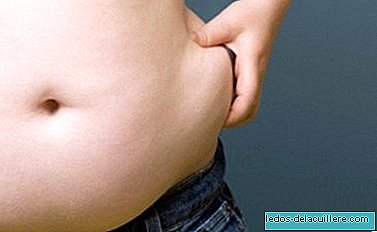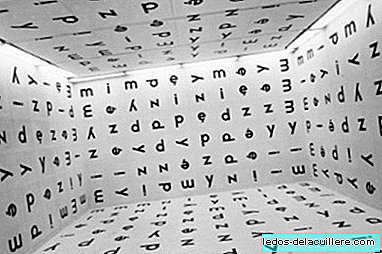
The Government has just announced the extension to eight weeks of paternity leave, which will enter into force from April 1, 2019, and the progressive expansion in the coming years until reaching 16 weeks in 2021, when it will be equal to the mother's permission.
We have collected some data to know when maternity and paternity leave were born in Spain, how they have evolved in our country in recent years and how they will continue until they reach their match.
Paternity leave in Spain

Paternity leave as such did not exist until 2007. Before that date men only had two days work permit remunerated for the birth of a child, according to the Workers' Statute.
15 days in 2007
In 2007, Organic Law 3/2007, of March 22, was approved for the Effective Equality of men and women. In her paternity leave is included for the first time as a measure of support for the reconciliation of personal, family and work life.
Its duration was of 13 uninterrupted days of permission by birth, adoption or foster care. Expandable in cases of childbirth, adoption or multiple foster care, in two more days for each child, from the second. In the case of large families, the permit was extended to 20 days.
This permission was joined by the permit two day recognized by the Workers' Statute in the case of the birth of a child, for a total of 15 days.
The 13-day paternity leave was paid by Social Security and the paid leave in the case of two-day birth was paid by the company.
 In Babies and more Paternity leave in Spain: how long does parental leave last in each situation?
In Babies and more Paternity leave in Spain: how long does parental leave last in each situation?Four weeks in 2017
Ten years after its creation, and although it was contemplated since 2011 in the Equality Law, the extension was not effective until January 1, 2017. It was extended to four weeks.
Five weeks in 2018
With the approval of the 2018 General State Budget, the green light has been given to the increase in one week of parental leave, which goes from four to five weeks. It should have entered into force on January 1, but it was frozen due to lack of support, it finally came into force on July 5 and is the one that we currently have until March 31, 2019.
Its duration is of five uninterrupted weeks, expandable by 2 more days for each child from the second, in cases of multiple birth, adoption or foster care.
Four weeks after birth and the last week can be enjoyed independently at another time within nine months after the date of birth of the child, prior agreement with the company.
Eight weeks in 2019
Three days ago the royal decree was announced in the BOE extends paternity leave to eight weeks from the first day of April 2019.
Of the eight weeks of permission, the first two will be mandatory and must match them with the mother's permission. The remaining six can be enjoyed within the first year of the child's life.
12 weeks in 2020
Beginning January 1, 2020, parents may enjoy 12 weeks of paternity leave, of which the first four will be mandatory and they must coincide with those of the mother, and the remaining ones can be taken at any time within the child's first year.
16 weeks in 2021
As of January 1, 2021, the parents will have 16 weeks of paternity leave equal to that of the mothers. Of the total permit, the first six weeks will be mandatory and they must coincide for both parents, and the remaining 10 can be enjoyed throughout the first year.
In addition, if both parents enjoy the 10 weeks after the mandatory six, they will have an extra week each.
 In Babies and more Paternity leave in the world
In Babies and more Paternity leave in the worldAnd the maternity leave?

The situation of maternity leave is less variable than that of paternity, since in the last thirty years he hasn't had any changes, although the extension to six months to reach the minimum of exclusive breastfeeding is something that has been claimed for years by various associations and groups.
12 weeks in 1931
In 1931 an Mandatory Maternity Insurance was established that granted a subsidy of 12 weeks to mothers.
14 weeks in 1976
With Law 16/1976, the maternity leave was extended in two weeks and the regulatory base went from being 75 percent, which was until then, to one hundred percent.
The working woman was entitled to at least a period of work rest of six weeks before delivery and eight after delivery. The postnatal period was established as mandatory, to which the time not enjoyed before delivery could be added at the request of the interested party.
16 weeks in 1989
The extension of the maternity leave to 16 weeks was published in the Official Gazette on March 3, 1989, which is still valid until today.
Then it was established that, in addition to the two-week extension, at least six of them have to be enjoyed after delivery.
 In Babies and more Maternity leave in Spain: how long does the maternity leave last in each situation
In Babies and more Maternity leave in Spain: how long does the maternity leave last in each situationMaternity leave, as a general character it's 16 weeks. The first six are mandatory and from that moment the mother can decide between continuing to enjoy her permission until it runs out, or giving it to the other parent for up to ten weeks.
In case of multiple birth, adoption or multiple foster care, two more weeks per child are added from the second.
Graph of the evolution of paternity and maternity leave
With this graph you can see in a more visual way the evolution of the permits for fathers and mothers throughout history and how they will continue to do so until 2021, which will be matched in duration.













